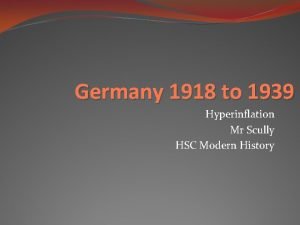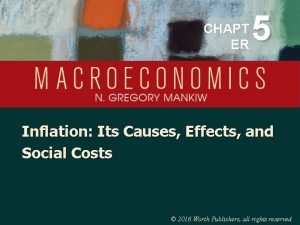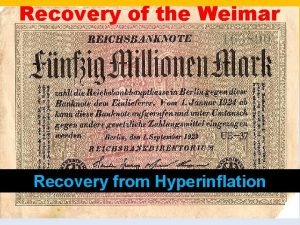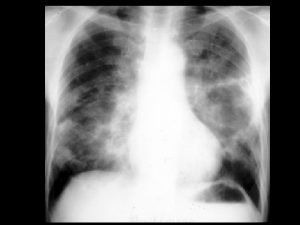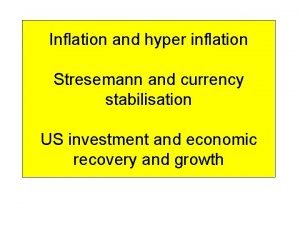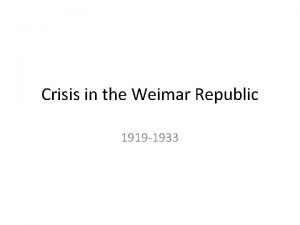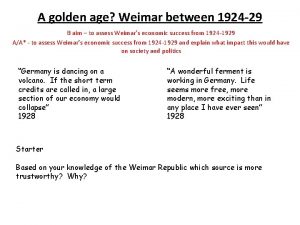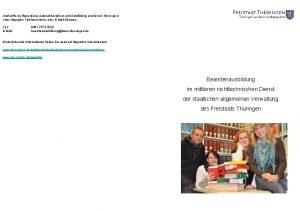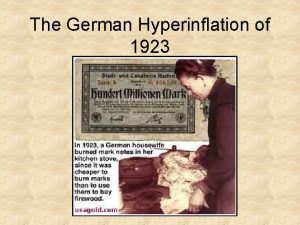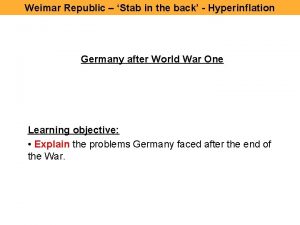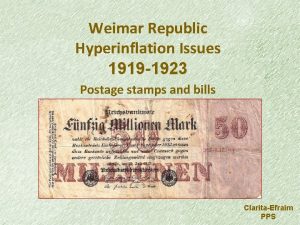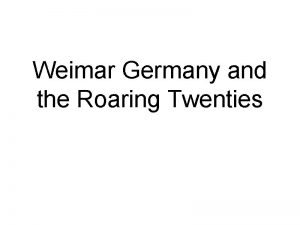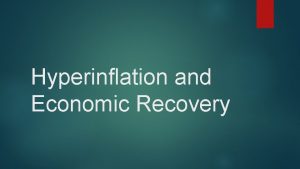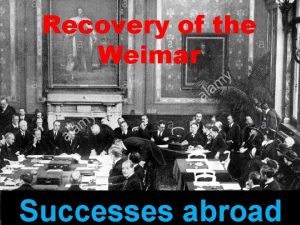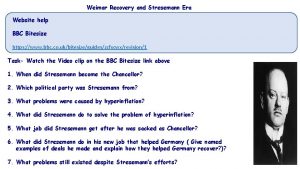Recovery of the Weimar Recovery from Hyperinflation Learning
















- Slides: 16

Recovery of the Weimar Recovery from Hyperinflation

Learning Outcomes • To investigate how the Weimar economy recovered following the hyperinflation of 1923 • To consider the role of Gustav Stresemann

Gustav Stresemann 1878 – 1929 • Gustav Stresemann was born in Berlin on 1878 • He became a Reichstag deputy in 1906 • He was appointed leader of the National Liberal Party in 1917 • Appointed foreign secretary in 1923 until his death in 1929. Served as Chancellor from August to November 1923 during the invasion of the Ruhr • Died in October 1929, just before the Wall street crash and robbing, in many peoples opinion, Germanys last hope of maintaining democracy.

• Hyperinflation proved to many that the old mark was of no use. Germany needed a new currency. • In September 1923, Germany had a new chancellor, Gustav Stresemann

• Gustav Stresemann had been a nationalist, but he realised that something needed to be done to save Germany. • The most important thing he did in 1923 was to organise the Great Coalition of moderate, pro-democracy parties in the Reichstag. At last, Germany had a government that could make laws!

Under Stresemann's guidance, the government called off the strike, persuaded the French to leave the Ruhr and even got the rest of the world to allow Germany to join the League of Nations in 1926.

• He knew that this was the only common sense approach to a crisis. • The mark was replaced with the new Rentenmark. This was issued in limited amounts and gradually restored confidence in the German currency. • In the following year the Rentenmark was converted into Reichsmark, a new currency backed by god reserves

The Dawes Plan • Stresemann realised that Germany could not afford the reparations payments and persuaded the French, British and Americans to change the payment terms through Dawes Plan , which was agreed in august 1924. • It was named after the US vice-president Charles Dawes, who played a leading role in setting up the plan.

The Dawes Plan - Terms • Reparations payments would begin at 1 billion marks for the first year and would increase over a period of four years to 2. 5 billion marks per year. • These payments were far more sensible and manageable and were based on Germanys capacity to pay.

The Dawes Plan - Terms • The Ruhr area would be evacuated by Allied occupation troops. This was carried out in 1925 • The German Reichsbank would be reorganised under allied supervision • The USA gave loans to Germany to help its economic recovery starting with a loan of 800 million marks. • Over the next six years US companies and banks gave loans of nearly 3, 000 million dollars.

The Young Plan • Despite the Dawes Plan Germany still found it difficult to pay • In 1929 the Allied Reparations committee asked an American banker, Owen Young, to investigate and he came up with a new plan for payments

The Young Plan • The reparations figure was reduced form £ 6, 600 million to £ 1, 850 million. • The length of time Germany had to pay was extended to 59 years with payments at an average 2. 05 billion marks per year.

How successful was the recovery? Arguments to suggest that the Weimar had recovered • The economy improved due to the loans from America • Public works provided new stadiums, apartment blocks and opera housed • Big businesses had been able to pay off its debts due to hyperinflation and benefitted from a period of industrial growth

How successful was the recovery? Arguments to suggest that the Weimar had recovered • Many workers were better off during this period as wages increased • There were better relations with workers and employers, there were fewer strikes between 1924 -29

How successful was the recovery? Arguments to suggest that the Weimar had NOT recovered • Germany was over dependent on US loans • Farmers in Germany were experiencing problems throughout the 1920 s and particularly after 1927 • The economic recovery did not affect everyone equally. The middle class never fully recovered from the hyperinfaltion

 Recovery of the weimar republic
Recovery of the weimar republic What is hyperinflation
What is hyperinflation Quantity theory of money
Quantity theory of money Sources rd germany
Sources rd germany Hyperinflation
Hyperinflation Stresemann hyperinflation
Stresemann hyperinflation Weimar republic gdp
Weimar republic gdp Weimar republic unemployment rate
Weimar republic unemployment rate Seminarraum weimar
Seminarraum weimar Was the weimar republic doomed to fail
Was the weimar republic doomed to fail Weimar republic
Weimar republic Drehrohrofen labor
Drehrohrofen labor The golden age of weimar
The golden age of weimar Weimar
Weimar Weimar republic
Weimar republic Weimar republic economic problems
Weimar republic economic problems Tvs weimar
Tvs weimar

